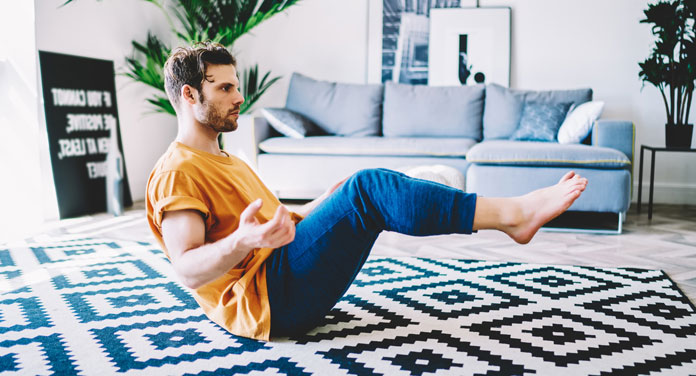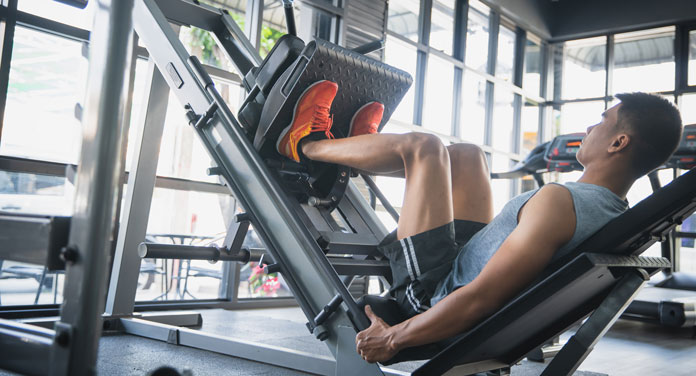Exercising In The Morning. Many employees are currently in the home office. Some enjoy it, others miss the regular office routine. Basically, you should try to find something positive in every situation. With morning exercise you can get off to a great morning start and do something for your mind and body.
If you work from home, you don’t have to commute to work. Of course, you could use the time gained to sleep longer.
If you want to improve your health and fitness, the time can also be used wonderfully for morning exercise. This may take a little discipline at first, but you’ll develop a routine after a short time.
The home workout should be designed in such a way that you can integrate it into your everyday life in the long term. Even when you drive back to work in the morning.
In the following article, we would like to explain how this can be implemented and what advantages and disadvantages early morning exercise entails.
Why Exercising In The Morning?
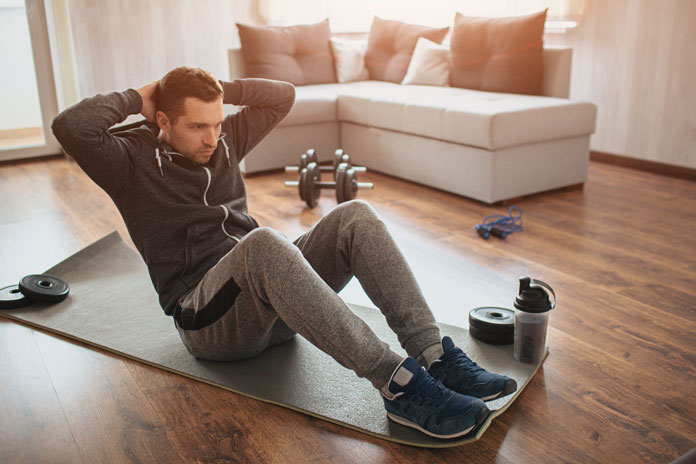
If you start the day with exercise, you can drive away all tiredness. You will then be more alert and more productive at work.
At night, our body goes into sleep mode. Shortly after getting up, hormones are released that activate the circulatory system. However, it may take time before you feel this. If you exercise in the morning, you speed up this process.
Exercising in the morning also boosts your metabolism. Many athletes perform better when they train on an empty stomach.
The energy dip after eating is well known to most people. In the morning, the carbohydrate and fat stores are emptied, and the stomach is not busy with digestion.
These are the best conditions to really work out. Afterward, of course, you can have a balanced breakfast.
Whether exercise on an empty stomach specifically helps to lose weight is still controversial in scientific circles. However, there is a lot to be said about it.
Sport in the morning also has a demonstrably positive effect on the psyche. Just the fact that you’ve motivated yourself to exercise in the morning increases your self-esteem.
Morning exercise as a daily routine gives structure to your everyday life. People who lead a structured everyday life are demonstrably happier.
Sport, regardless of the time of day, also promotes the release of endorphins.
What Speaks Against Morning Exercise?
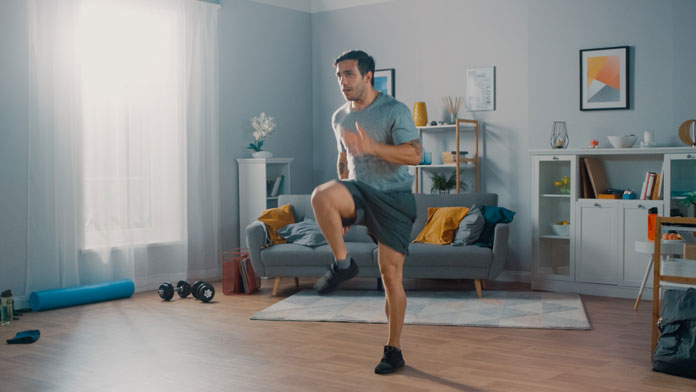
Everyone has their own biorhythm. A basic distinction is made between “larks” and “owls”. Early risers are called larks. These people feel fit and agile in the morning.
Owls, on the other hand, are nocturnal. They prefer to sleep longer in the morning and to do more demanding activities later in the day.
If your biorhythm is like that of an owl, e.g. B. because you work night or shift work, it makes little sense to force you to exercise in the morning. This will not result in a feeling of well-being.
Another criticism of early sport is that the training is limited in time. This is especially true if you have to drive to work after exercising.
Some people find constantly looking at the clock stressful. There is a risk of getting bogged down and then getting hectic. Ultimately, this is a matter of taste and sensitivity.
Which Sports Are Suitable?
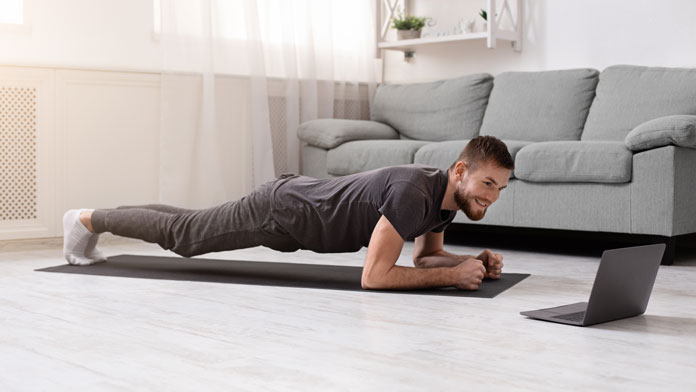
The term morning exercise is broadly defined. Basically, you can do whatever sport you enjoy the most.
If you do the training in the fresh air, you also ensure that your body absorbs vitamin D. For example, you can jog or ride a bike in the park.
Various strength exercises can also be carried out outside. If you have to go to work, you should walk or cycle your way to work. When the weather is bad, a home workout is ideal.
How Can You Motivate Yourself?
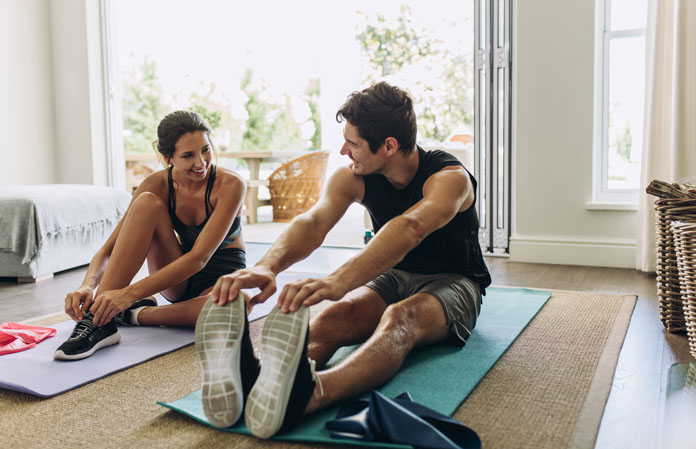
If there is a lack of motivation, you should set clear goals. What would you like to achieve in terms of your fitness? A weight loss? Condition improvement? Back Pain Relief From Office Work?
Imagine how much you could increase your well-being if you include exercise as a morning routine.
However, your fitness program should be realistic. Adapt it to your personal needs in terms of time and strength. You can increase your training time and intensity as needed.
If you set yourself too high goals (e.g. getting up at 5 a.m. every morning to jog for an hour), the risk increases that you will give up on this plan exhausted after a few days.
Focus on actionable workouts (e.g. get up 30 minutes earlier every morning to do a Tabata workout).
Set an alarm clock and have your sports gear ready the night before. Maybe you are already preparing your training place in the living room by placing your mat and dumbbells.
If you’re in a relationship, let your partner know what you’re doing. Maybe you can train together early and motivate each other?
Example Of A Short Workout (15 Minutes)
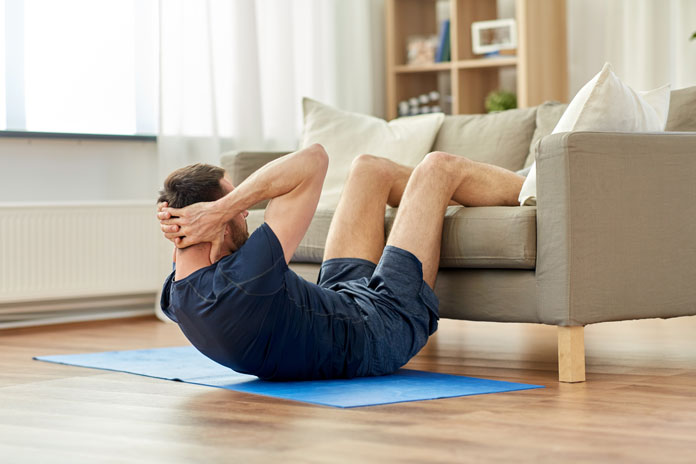
Very few people have time in the morning for an extensive training program. The good news is that it is not necessary at all.
With the right exercises, it is possible to effectively train the entire body in just 15 minutes. The so-called Tabata training is particularly suitable for this purpose.
These are high-intensity training intervals. You put stress on your body B. 20 seconds maximum, followed by a 10-second break.
Then it goes on. Depending on the exercise, the training intervals can be shortened or lengthened.
Warm-up phase (4 minutes):
30 sec. Shoulder circles on both sides
30 sec. Shoulder circles on the right
30 sec. Shoulder circles on
the left 30 sec. Stand on tiptoe
30 sec. Right side leg raise (standing)
30 sec. Left side leg raise (standing)
60 sec. Marching in place (while optional shoulder circles)
Training phase (10 minutes):
Squat: 20-sec work – 10-sec rest (4 reps) Push-ups: 20-sec work
– 10-sec rest (4 reps)
Crunches: 20-sec work – 10-sec rest (4 reps)
Burpees: 20-sec Load – 10-sec rest (4 reps)
Lunges: 20-sec load – 10-sec rest (4 reps, 2x per leg)
Stretch (1 minute):
Touch your toes with your fingertips. Make sure to straighten your legs.
Example Of A Medium-length Workout (30 Minutes)
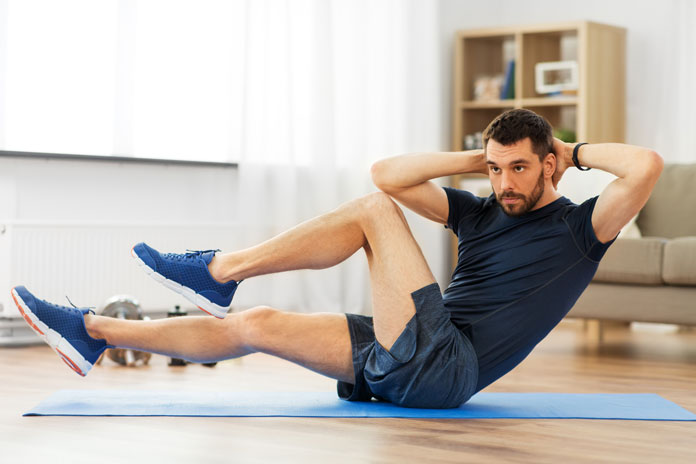
If the 15-minute workout is too short for you, repeat the above Tabata circuit 2-3 times, increasing your workout time to 20-30 minutes. If Tabata is too dynamic for you, you can also make your training calmer.
Warm-up phase (approx. 5 minutes):
60 sec Double Shoulder Circles
60 sec March in Place
30-sec Cobra (yoga position to straighten back)
10-sec Rest
30-sec Cobra
60 sec Right Unilateral Leg Raise (lying down)
60 sec Left Unilateral Leg Raise ( lying)
Training phase (approx. 20 minutes):
2 passes Tabata (see above)
Alternatively:
3 x 15 tricep push-ups (arms close to the body)
3 x 15 squats (optional with dumbbells)
3 x 15 bicep push-ups (arms beside chest)
3 x 15 squats
3 x 15 right leg lunges 3 x 15 rows
(standing, optional with dumbbells)
3 x 15 lunges left leg
3 x 15 crunches
Stretching:
Stand on tiptoe and take several deep breaths. Then touch your toes with your fingertips.
Next, stand against a wall and place your left leg in front, and your right leg back as if you were doing a lunge.
This is how you stretch your calves. Repeat the process with the right leg.
Second, don’t wake yourself up with an alarm clock during your deep sleep.
During deep sleep, the body is very relaxed and builds most of the muscles. One site that can help you with this is sleepy.
It tells you when to fall asleep and when to stay up so you wake up between two sleep cycles.
Thirdly, you shouldn’t hang on your smartphone for so long in the evening. The blue light only keeps you awake unnecessarily and prevents your body from falling asleep.
Example Of A Long Workout (60 Minutes)
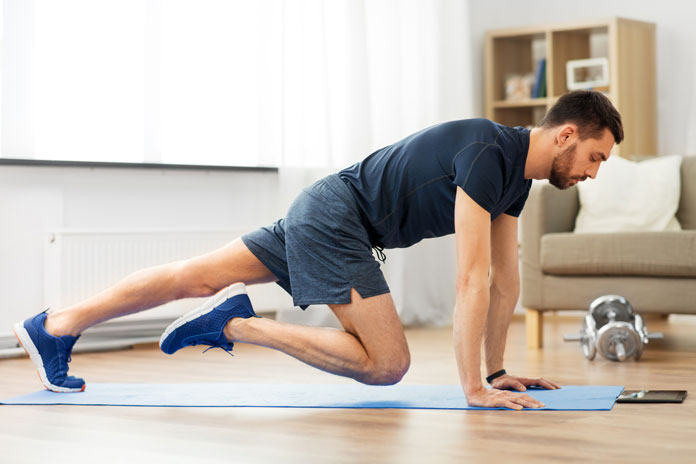
If you want to do a particularly long workout, it is advisable to extend the warm-up phase.
To warm-up, you could B. jog or walk for 15 to 20 minutes. You can then do either the Tabata or strength exercises already described as often as you like.
If you would like to integrate further endurance exercises, jumping jacks (jumping jacks) or jumping rope are useful. Specifically, this could look like this:
Warm-up phase (approx. 15 minutes):
jogging or walking
Training phase (approx. 40 minutes):
3 x 15 tricep push-ups (arms close to the body)
3 x 15 squats (optional with dumbbells)
3 x 15 bicep push-ups (arms beside chest)
3 x 15 squats
60-sec Jumping jacks
3 x 15 right leg lunges
3 x 15 rows (standing, optional with dumbbells)
3 x 15 left leg lunges
60-sec jump rope
3 x 15 crunches
3 x 15 mountain climbers 3
x 15 burpees
60-sec jump rope
3 x 15 squats
3 x 15 rows
3 x 15 bicep curls (with dumbbells or water bottles)
Stretching (about 5 minutes):
You can use the same stretching exercises as the half-hour workout.

